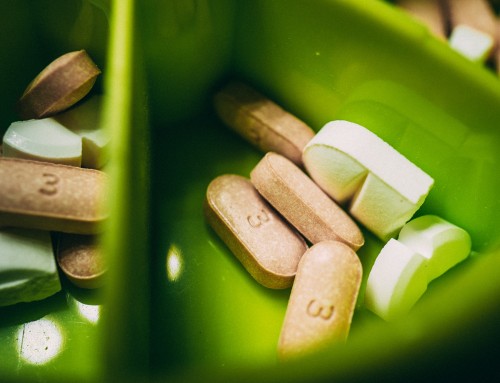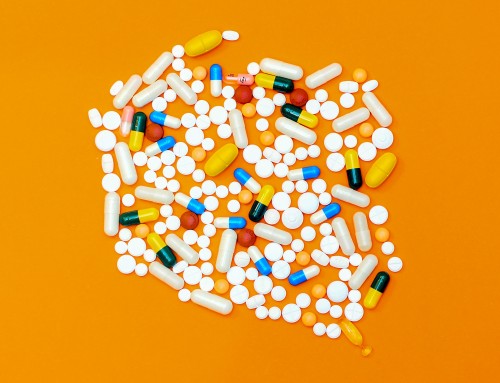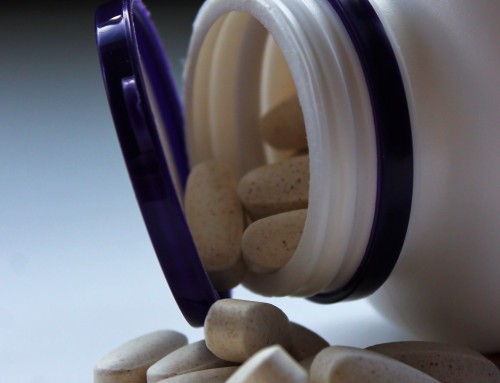Non EAA’s – A Brief Guide
Non Essential Amino Acids
Key Points
-
11 Non – Essential amino acids
-
Body can produce them
-
Hard training and illness can deplete them
-
Body can increase/decrease rate that they are produced
With the amount of amino acids required for the body it can be confusing to know what is essential and what is non essential. This guide will help decipher what non essential amino acids are and its role in the body.
Non – essential amino acids are still essential in daily functioning however as your body can produce these amino acids it is not an essential requirement to include them in your daily diet. When going through a hard training routine or suffering from illness your body may not be producing non-essential amino acids at a sufficient rate to function correctly or not at all which is why supplementing them may be needed. Your body can shift the rate at which certain non-essential amino acids are produced for what the body needs.
Glutamic acid
Glutamic Acid or glutamate as it is also known as is an amino acid that increases the firing of neurons in the central nervous system (26). It also converts into glutamine or GABA which are also amino acids that help pass messages to the brain (27), metabolises sugars and fats (28) and the brain uses it as fuel.
Aspartic acid
Aspartic acid is a non-essential amino acid, and is a building block for proteins.
Glutamine
Glutamine is a naturally non-essential neutral amino acid that helps with the transport of nitrogen between tissues. Heavy exercise has shown a reduction of glutamine in the blood (36). The amount of glutamine in the muscle is known to be related to the rate of protein synthesis (37) and glycogen synthesis (38) in the first few hours of recovery period of exercise.
Glycine
Glycine is one of the components of creatine which helps increase muscle growth and energy during exercise (39). When metabolised it acts as an amino acid and regulates blood sugar levels which can also control that amount of sugar released into the blood (40).
L-alanine
L-alanine is a non-essential amino acid which has been found to aid in the metabolism of carbohydrates and sugar (41). It has also been found to increase immunity (42), provide energy for the muscle (43), brain and central nervous system (44).
L-arginine
L-arginine is an amino acid which helps synthesis nitric oxide (45), this in turn helps lower blood pressure (46) and coronary heart disease (47).
L-cystine
L-cystine is known as a semi-essential amino acid as it is formed directly from L-methionine. Its functions aid in the detoxification of sulphuric acid when combined with glycine and glutamic acid. There is also evidence of anti inflammatory properties (50).
L-proline
L-proline is a non-essential amino acid which is a precursor to arginine. L-arginine helps synthesis of nitric oxide (51), this in turn helps to lower blood pressure (52) and risk of coronary heart disease (53).
L-serine
L-serine is an amino acid which is vital in the development and functioning of the central nervous system (54) and is also synthesised by glycine (55) and threonine (56).
L-tyrosine
L-tyrosine is an amino acid which has been found to help produce adrenaline (59) and dopamine (60).
Asparagine
Asparagine is needed for the production of the body’s cells and tissues as well as balance and nervous function.
Summary
The plethora of Amino Acids that are available have a number of different roles within the body. There are numerous Supplements available that can help with getting access to them if you feel you may be deficient in any of them.
References
26 – Hamberger, A. C., Chiang, G. H., Nylén, E. S., Scheff, S. W., & Cotman, C. W. (1979). Glutamate as a CNS transmitter. I. Evaluation of glucose and glutamine as precursors for the synthesis of preferentially released glutamate. Brain research, 168(3), 513-530.
27 – Tsushida, T., & Murai, T. (1987). Conversion of glutamic acid to. GAMMA.-aminobutyric acid in tea leaves under anaerobic conditions. Agricultural and biological chemistry, 51(11), 2865-2871.
28 – Graham, T. E., Sgro, V., Friars, D., & Gibala, M. J. (2000). Glutamate ingestion: the plasma and muscle free amino acid pools of resting humans.American Journal of Physiology-Endocrinology And Metabolism, 278(1), E83-E89.
36 – Parry-Billings, M., Budgett, R., Koutedakis, Y., Blomstrand, E., Brooks, S.., Williams, C., & Newsholme, E. A. (1992). Plasma amino acid concentrations in the overtraining syndrome: possible effects on the immune system. Medicine and science in sports and exercise, 24(12), 1353-1358.
37 – Rennie, M. J., Edwards, R. H. T., Krywawych, S., Davies, C. T., Halliday, D., Waterlow, J. C., & Millward, D. J. (1981). Effect of exercise on protein turnover in man. Clin Sci, 61(5), 627-639.
38 – Bowtell, J. L., Gelly, K., Jackman, M. L., Patel, A., Simeoni, M., & Rennie, M. J. (1999). Effect of oral glutamine on whole body carbohydrate storage during recovery from exhaustive exercise. Journal of Applied Physiology, 86(6), 1770-1777.
39 – Hultman, E., Soderlund, K., Timmons, J. A., Cederblad, G., & Greenhaff, P. L. (1996). Muscle creatine loading in men. Journal of Applied Physiology, 81(1), 232-237.
40 – Felig, P., & Wahren, J. (1971). Influence of endogenous insulin secretion on splanchnic glucose and amino acid metabolism in man. Journal of Clinical Investigation, 50(8), 1702.
41 – Felig, P. (1973). The glucose-alanine cycle. Metabolism, 22(2), 179-207.
42 – Schechter, I., Schechter, B., & Sela, M. (1966). Combining sites of antibodies with L-alanine and D-alanine peptide specificity and the effect of serum proteolytic activity on their estimation. Biochimica et Biophysica Acta (BBA)-General Subjects, 127(2), 438-456.
43 – Odessey, R., Khairallah, E. A., & Goldberg, A. L. (1974). Origin and possible significance of alanine production by skeletal muscle. Journal of Biological Chemistry, 249(23), 7623-7629.
44 – Monaghan, D. T., Bridges, R. J., & Cotman, C. W. (1989). The excitatory amino acid receptors: their classes, pharmacology, and distinct properties in the function of the central nervous system. Annual Review of Pharmacology and Toxicology, 29(1), 365-402.
45 – Palmer, R. M., Ashton, D. S., & Moncada, S. (1988). Vascular endothelial cells synthesize nitric oxide from L-arginine. Nature, 333(6174), 664-666.
46 – Rees, D. D., Palmer, R. M., & Moncada, S. (1989). Role of endothelium-derived nitric oxide in the regulation of blood pressure. Proceedings of the National Academy of Sciences, 86(9), 3375-3378.
47 – Riddell, D. R., Graham, A., & Owen, J. S. (1997). Apolipoprotein E inhibits platelet aggregation through the l-arginine: nitric oxide pathway Implications for vascular disease. Journal of Biological Chemistry, 272(1), 89-95.
48 – Siliprandi, N., Sartorelli, L., Ciman, M., & Di Lisa, F. (1989). Carnitine: metabolism and clinical chemistry. Clinica Chimica Acta, 183(1), 3-11.
49 – Müller, D.M., Seim, H., Kiess, W., Löster, H. & Richter, T. (2002) Effects of Oral l-Carnitine Supplementation on In Vivo Long-Chain Fatty Acid Oxidation in Healthy Adults Metabolism, Volume 51, issue 11, (pp. 1389-1391)
50 – Fiorucci, S., Antonelli, E., Distrutti, E., Rizzo, G., Mencarelli, A., Orlandi, S., … & Wallace, J. L. (2005). Inhibition of hydrogen sulfide generation contributes to gastric injury caused by anti-inflammatory nonsteroidal drugs. Gastroenterology,129(4), 1210-1224.
51 – Palmer, R. M., Ashton, D. S., & Moncada, S. (1988). Vascular endothelial cells synthesize nitric oxide from L-arginine. Nature, 333(6174), 664-666.
52 – Rees, D. D., Palmer, R. M., & Moncada, S. (1989). Role of endothelium-derived nitric oxide in the regulation of blood pressure. Proceedings of the National Academy of Sciences, 86(9), 3375-3378.
53 – Riddell, D. R., Graham, A., & Owen, J. S. (1997). Apolipoprotein E inhibits platelet aggregation through the l-arginine: nitric oxide pathway Implications for vascular disease. Journal of Biological Chemistry, 272(1), 89-95.
54 – Tabatabaie, L., Klomp, L. W., Berger, R., & de Koning, T. J. (2010). L-serine synthesis in the central nervous system: a review on serine deficiency disorders. Molecular genetics and metabolism, 99(3), 256-262.
55 – Shemin, D. (1946). The biological conversion of L-serine to glycine. Journal of Biological Chemistry, 162(2), 297-307.
56 – Garg, H. G., Von Dem Bruch, K., & Kunz, H. (1993). Developments in the synthesis of glycopeptides containing glycosyl L-asparagine, L-serine, and L-threonine. Advances in carbohydrate chemistry and biochemistry, 50, 277-310
57 – Siliprandi, N., Sartorelli, L., Ciman, M., & Di Lisa, F. (1989). Carnitine: metabolism and clinical chemistry. Clinica Chimica Acta, 183(1), 3-11.
58 – Müller, D.M., Seim, H., Kiess, W., Löster, H. & Richter, T. (2002) Effects of Oral l-Carnitine Supplementation on In Vivo Long-Chain Fatty Acid Oxidation in Healthy Adults Metabolism, Volume 51, issue 11, (pp. 1389-1391)
59 – Boylen, J. B., & Quastel, J. H. (1961). Effects of L-phenylalanine and sodium phenylpyruvate on the formation of adrenaline from L-tyrosine in adrenal medulla in vitro. Biochemical Journal, 80(3), 644.60 – Mannironi, C. E. C. I. L. I. A., Scerch, C. H. I. A. R. A., Fruscoloni, P. A. O. L. O., & Tocchini-Valentini, G. P. (2000). Molecular recognition of amino acids by RNA aptamers: the evolution into an L-tyrosine binder of a dopamine-binding RNA motif. Rna, 6(4), 520-527.




